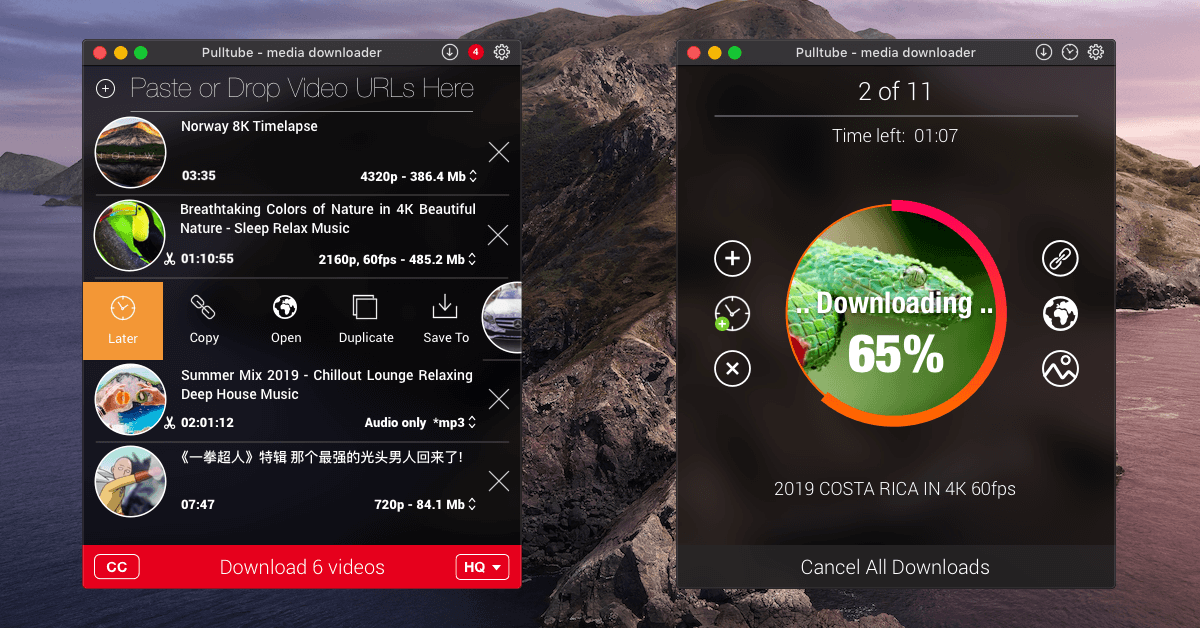
It makes sense, but measurements to date have not confirmed it as the level was already quite low. Other DIYers have determined that this reduces the distortion level a bit. Some resistor values in the SRPP stage have been changed to increase in the current flow. To date I have not been informed of any failures in either application, but I don't feel comfortable with the 37 volt rating of the standard parts in the KT88 application. The "A" version can use the standard LM317. It really is only needed for the "B" version. I understand that these are discontinued but there are many available in parts houses. The CCS in the original amps was a standard LM317 voltage regulator IC. The basic circuit is the same as previous Oddwatt amplifiers (see other projects). In the measurements and listening sections I relate the differences. The difference is in both the bias voltages and maximum power dissipations. Group "B" consists of KT88, KT90, 6550 and their variants. Group "A" consists of KT77, 6CA7, E元4, 6L6GC and similar variants. SRPP / SIPP Tube Amplifier Design with CCSįor design purposes I found that potential power tubes pretty much fell into two groups. A single chassis amplifier would weigh in excess of 50 pounds. A side benefit is that you don't need a set of wheels to move the amps. But the transformers are less expensive than the one needed for a single chassis stereo amplifier. In the stereo version it requires two power transformers, rectifiers and filters. Second if you need three (perhaps one for a sub woofer) then you can build three. For starters if you only need one amp, then you need only build one. In some ways this is more complex and costly and in some ways cheaper, easier and has advantages. This is a pair of mono blocks amplifiers - each with its own power supply. If you are not familiar with tube equipment or are not experienced with high voltages, perhaps this is not a suitable project. Contact with the voltages at various points in this circuit can be fatal. Photograph 2: 6NO30 Thermal Delay Relay TubeĪs in nearly all tube projects dangerous voltages are used. Other tubes with the same base as the 5751 (12AU7, 12AT7 and 12AX7) were tried, but none performed as well as the 5751. This tube will directly substitute for the octal 12SL7 in this circuit.
#Pulltube max driver#
An alternative driver for 9 pin application is the type 5751. The SRPP driver and SIPP output work very well together. For a more complete description of how the two stages of the amp work see the original OddWatt project (ECC802S SRPP / EL84 (6BQ5) Push-Pull Tube Amplifier). I will not further speculate why the one brand works and the other doesn't.

I have since then acquired a set of new production Gold Lion KT88 tubes and they behave perfectly. It is possible that this is a situation with just the one brand of KT88s. By comparison the JJ 6L6GC tubes and JJ KT77 will balance within one mA and stay there.

With current balance being an important consideration of the design this is not good. One or the other tube (not predictable which one) will start to conduct more than its fair share of the current. The circuit allows for adjustment of the bias (the 25 ohm variable resistor) but the EH tubes do not stay in sync. I suspect the reason is related to thermal problems and the use of common (joint) cathode bias. Additionally they don't behave well in this particular amp. The EH KT88 can deliver more power, but the sound is different from the KT77. Using the EH KT88 tubes has been a mixed situation.

I tried the amp with Electro-Harmonix KT88 tubes. I initially used KT77 tubes as I was familiar with the sound and it would be a good starting point. has a good selection of these tubes - NOS and new productions. The Odd Blocks are rather similar only they are two separate amps and were planned up front to be able to use any of the power tubes that share the same pin arrangements (6L6GC, KT77, KT88, E元4, 6CA7 and all the variants). The previous project, the OddWatt 225 (6SL7 SRPP / KT77 Class-A Push-Pull Tube Amplifier) is in daily operation and (with JJ KT77 tubes) has a wonderful tube sound.


 0 kommentar(er)
0 kommentar(er)
